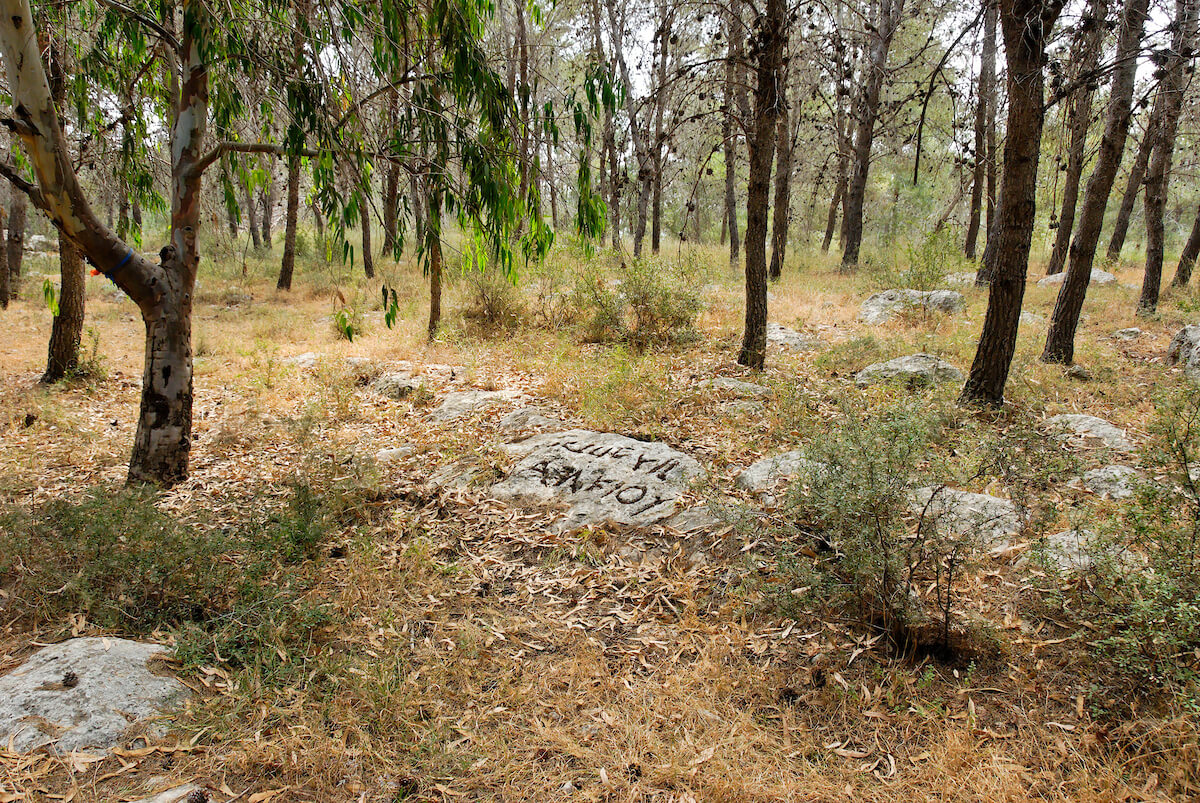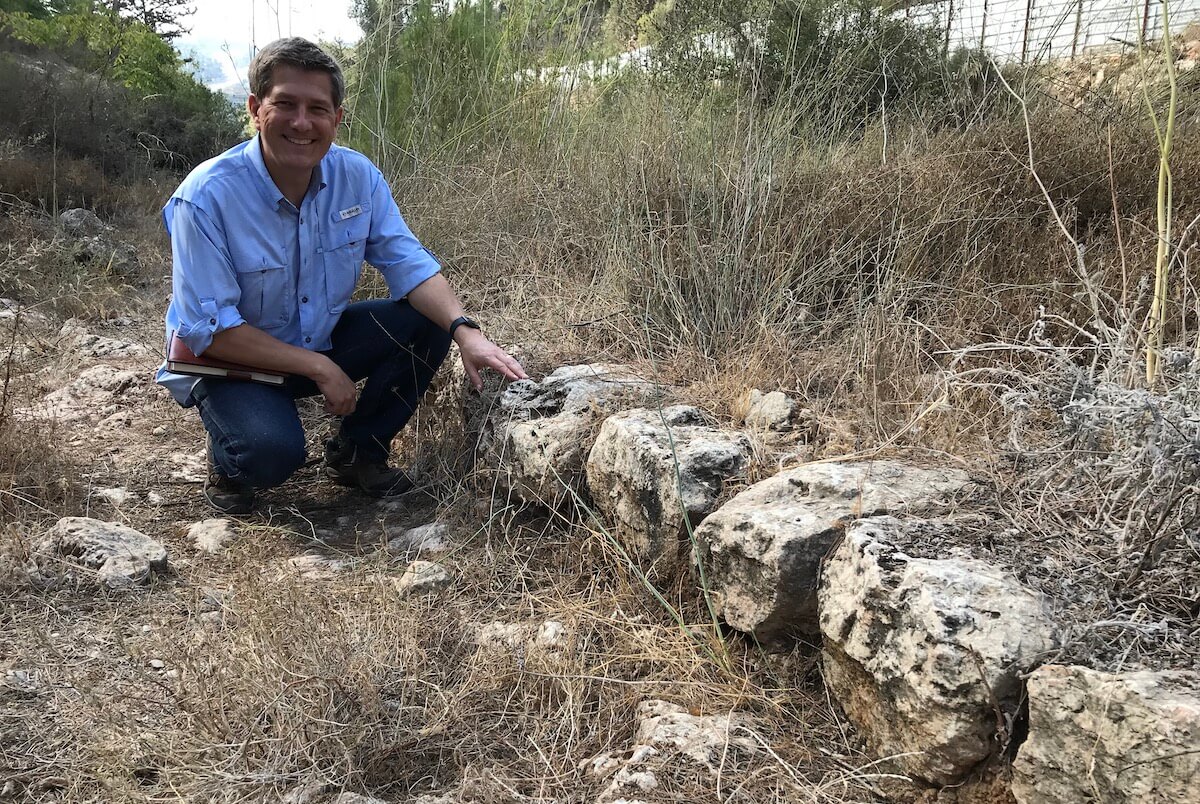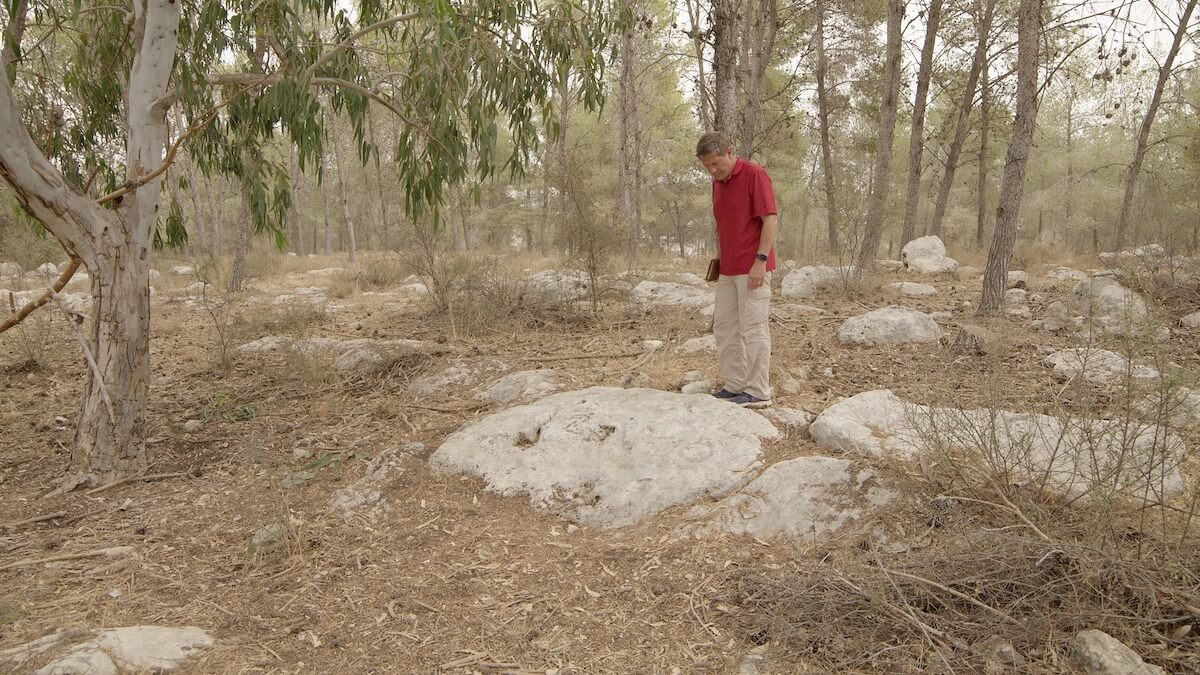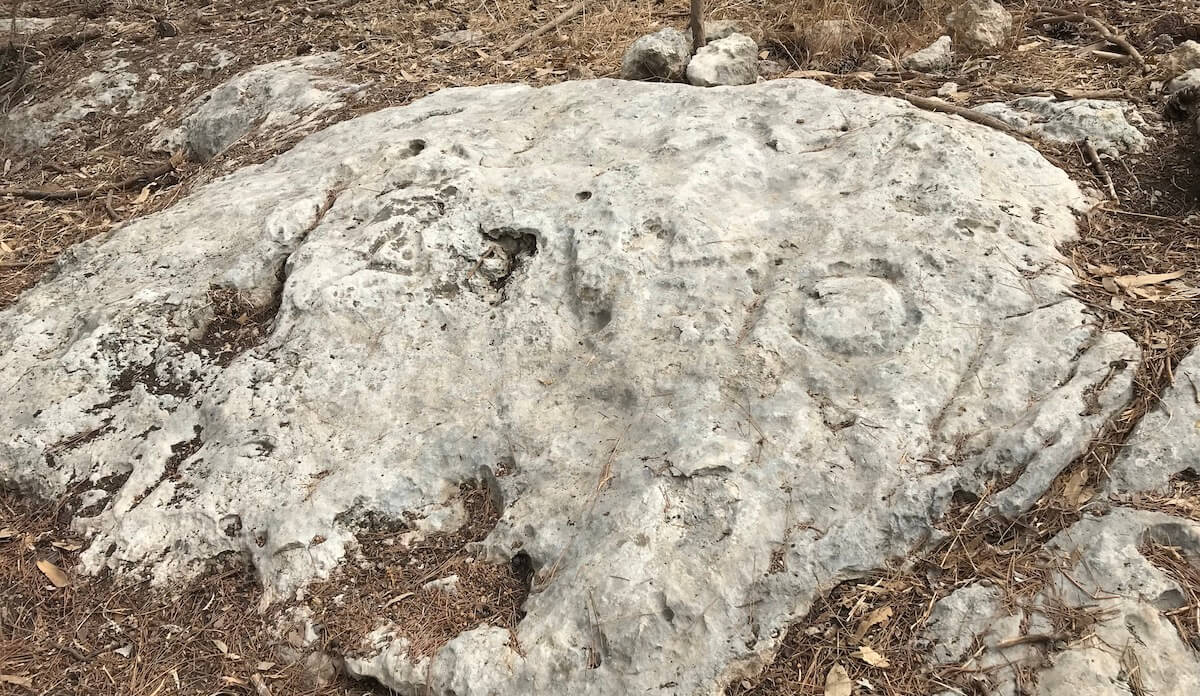Without preservation, truth can grow weeds. Truth remains true, of course, but it can get buried beneath brambles and may as well not exist. Two sites I recently saw in Israel illustrate this well.

(Photo taken in 2007 of Gezer boundary inscription #8. Courtesy of the Pictorial Library of Bible Lands)
I traveled to Israel to do some filming for my video Web site, Walking the Bible Lands. Two of the locations I filmed at proved hard to find. Why?
They are vanishing.
But these eroding places made me think beyond the importance of preserving them. They suggest a much deeper need in our walk with God.
The Emmaus Road is Making an Exit
The Gospel of Luke records Jesus walking the road to Emmaus with two disciples after His resurrection. Luke describes the road as “about seven miles from Jerusalem” (Luke 24:13), describing the round-trip distance it takes to walk it.
A fine article by David Bivin discusses both the location of biblical Emmaus, as well as the vanishing road Jesus walked to get there. After contacting David, I was able to find the remains of the road, which amounts to a few curbstones still protruding from the ground. The erosion and destruction caused by the construction of a cemetery and a massive water main has left little to find of the Emmaus Road.

(Photo: On the Emmaus Road in 2018; photo by Scott Wilson)
A Gezer Boundary Stone Erodes
Boundary stones in antiquity marked the borders of a city or of one’s property. They were a big deal to God (Deuteronomy 19:14). (I wrote in another post the spiritual benefits of biblical boundary stones.)
Archeologists have located a number of the ancient boundary stones from Tel Gezer. But finding one of them proved a massive challenge. Last year, several of us searched for more than an hour and finally had to give up. This year, we almost gave up again.

(Photo: Gezer boundary stone 2018; photo by Scott Wilson)
To locate the stone, we used GPS coordinates as well as photographs taken more than 10 years ago. After we located the stone, it was amazing how much it had eroded in a mere 11 years. Compare the photo above to the one taken 11 years ago at the top of this post.
In another 10 years or so, the letters may be completely illegible.
Out of Sites, Out of Mind
Why preserve these sites? After all, we have their stories recorded in the Bible. What matters most is that an event happened, not where it happened, right?
We preserve these sites because they help preserve the validity of the words on paper in a day when even modern history has its cynics (like those who deny the Holocaust of WWII). We preserve historical sites not to rake cash from tourists, but to help keep the real in reality. History happened somewhere, and when we preserve the sites we help to preserve the history.
The good news? We can still find these places—for now. But their deterioration should give us pause.
- As with the Gezer boundary stones, the limits of ancient lines can erode from sight and eventually get lost altogether.
- As with the Emmaus Road, the new nearby cemetery built to bury the dead has all but buried the road itself—and left no headstone to mark it.
Without something tangible to lean on, history can erode into myth. And therein lies a danger.
Those who cannot remember the past are condemned to repeat it. —George Santayana

(Photo: Gezer boundary stone 2018 closeup)
Preserving More than Places
Of course, our faith rests on the truths of Scripture, which occurred in history and also extend beyond history to eternity. Scripture remains true, whether or not we can point to the place where history occurred.
But these vanishing sites urge us to consider something more essential than the locations themselves. Without preservation, truth can get hidden in the weeds. And just as ancient boundaries etched in bedrock can erode from sight, so our convictions can fade if we fail to preserve our daily commitment to them.
We will find it much easier to maintain our convictions by a simple, daily commitment to God’s Word rather than trying to dig up old truths beneath years of neglect. As Paul wrote:
To write the same things again is no trouble to me, and it is a safeguard for you. —Philippians 3:1
Tell me what you think: What are some ways we can keep truth from getting buried in our lives? To leave a comment, just click here.
Here’s where to find the Emmaus Road on Google Maps:
Here’s where to find one of the Gezer Boundary Stones on Google Maps:
